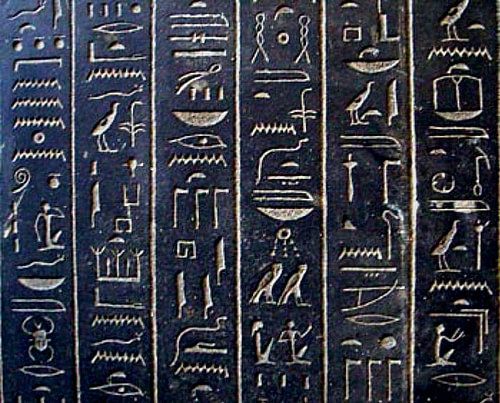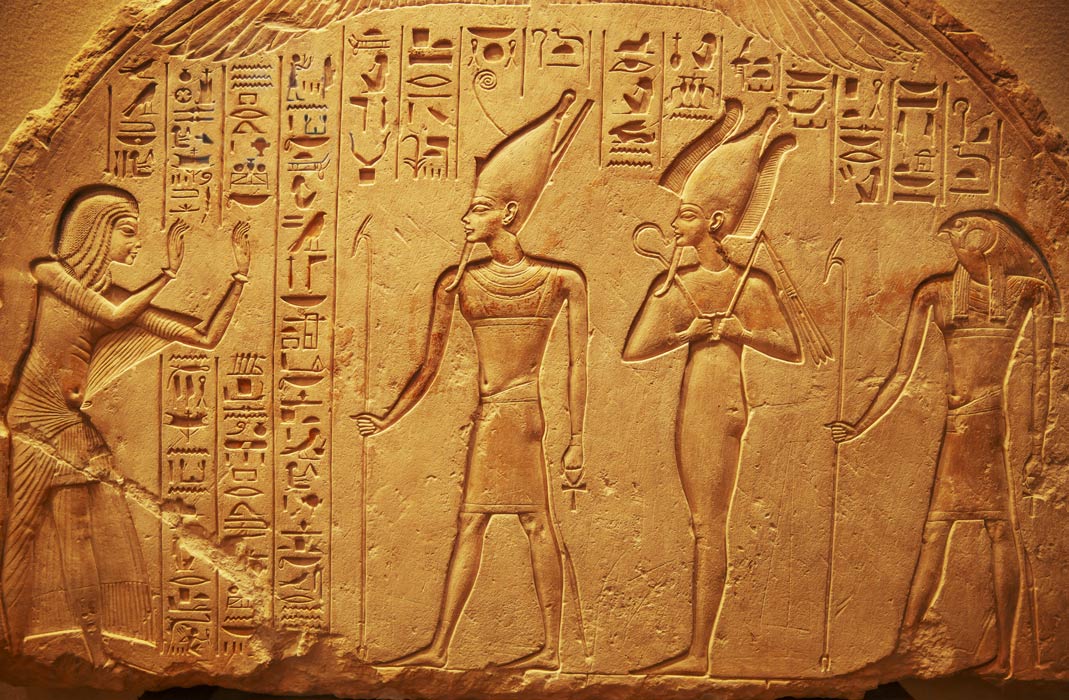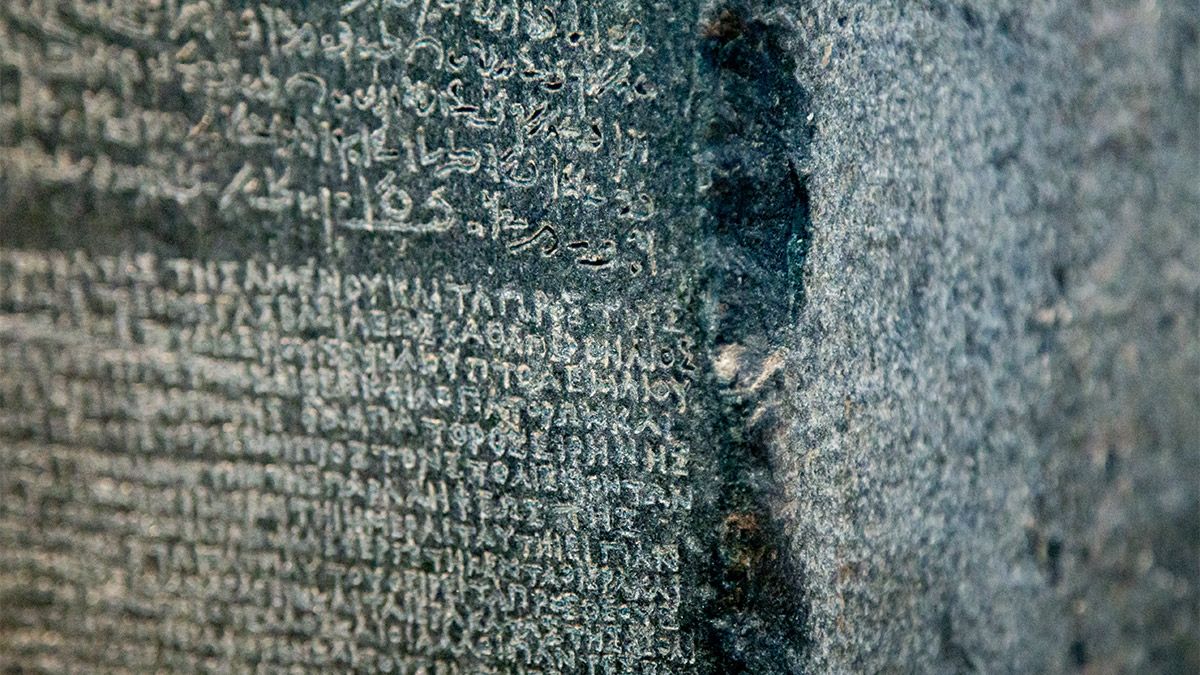Uncover the Secrets of Egyptian Hieroglyphs: A Guide to the Ancient Writing System

I. Introduction to Egyptian Hieroglyphs
Ancient Egyptian Writing System Overview
Egyptian hieroglyphs were a complex system of writing used by the ancient Egyptians. The word "hieroglyph" is derived from the Greek words "hieros," meaning sacred, and "glyphein," meaning to carve or inscribe. This writing system was primarily used on temple and tomb walls, papyrus scrolls, and various artefacts.
Hieroglyphs are pictorial symbols that represent objects, actions, sounds, and ideas. They were written from right to left and could be arranged vertically or horizontally. Initially, hieroglyphs were primarily reserved for important religious and political texts, but over time, they became more widely used and adapted for everyday purposes.
Importance and Significance of Hieroglyphs
The Egyptian hieroglyphic script played a crucial role in the ancient Egyptian civilization. Its importance can be seen in the following ways:
1. Communication and Record-Keeping: Hieroglyphs were the primary means of communication in ancient Egypt. They recorded important events, historical accounts, religious rituals, and administrative matters. They provided a way to preserve and transmit knowledge and information across generations.
2. Religious and Ritualistic Significance: Hieroglyphs were deeply intertwined with religion in ancient Egypt. They were used to convey religious concepts, rituals, and beliefs. Hieroglyphic inscriptions adorned temple walls and tombs, visually representing the ancient Egyptian worldview.
3. Decoding Ancient Egyptian History: Deciphering Egyptian hieroglyphs in the early 19th century was a significant milestone in understanding ancient Egyptian civilization. It allowed scholars to unlock the secrets of ancient texts and gain insights into the Egyptians' society, culture, and history.
4. Symbolism and Artistic Expression: Hieroglyphs were not only a form of writing but also a form of art. The intricate symbols and pictorial representations added a visual element to the written language. Hieroglyphic inscriptions were often accompanied by artistic illustrations, creating a harmonious blend of words and images.
Although hieroglyphs fell out of use after the decline of ancient Egypt, their legacy lives on. The decipherment of hieroglyphs has shed light on the fascinating world of ancient Egypt and continues to captivate scholars and enthusiasts alike.
To explore more about Egyptian hieroglyphs, you can visit here for detailed information and examples.

II. A Brief History of Hieroglyphs
Origins and Development of Hieroglyphs
Hieroglyphs are a system of writing that was used in ancient Egypt. The word "hieroglyph" comes from the Greek words "hieros," meaning sacred, and "glypho," meaning carve or inscribe. Hieroglyphs were first used around 3200 BCE and continued for over 3,000 years until the end of the fourth century BCE. They were primarily used for religious and monumental inscriptions, as well as for personal and administrative documents.
The origins of hieroglyphs are believed to have been influenced by earlier pictographic writing systems, such as the Mesopotamian cuneiform and the Sumerian proto-cuneiform scripts. The earliest hieroglyphic inscriptions were found on pottery shards and demonstrated a clear association with the development of Egyptian art and culture.
Over time, hieroglyphs became more complex and sophisticated. Instead of representing objects directly, hieroglyphs began to represent sounds and concepts. This allowed for the expression of more abstract ideas and the recording of historical events and religious beliefs.
Evolution and Adaptation over time
The use of hieroglyphs continued to evolve and adapt over time, reflecting changes in Egyptian society and language. Here are some key points in the evolution of hieroglyphs:
1. Hieratic Script: Around 2700 BCE, a simplified script known as hieratic script was developed. The hieratic script was derived from hieroglyphs but was easier and faster to write, making it suitable for day-to-day administrative and religious texts.
2. Demotic Script: Another simplified script emerged in the 7th century BCE. The demotic script was even more cursive and was used for legal and administrative documents. It eventually replaced the hieratic script as the primary script for writing in Egypt.
3. Rediscovery: The decipherment of hieroglyphs was a major breakthrough in understanding ancient Egyptian culture. The Rosetta Stone, discovered in 1799, provided the key to deciphering hieroglyphs by providing a text in three different scripts: hieroglyphs, demotic script, and ancient Greek.
4. Modern Understanding: Today, hieroglyphs are appreciated as a system of writing and an artistic form. They have inspired many artists, designers, and scholars, and their study continues to reveal new insights into ancient Egyptian history and culture.
To explore more about the origins and development of hieroglyphs, visit this link.
Hieroglyphs are a fascinating and complex writing system that offers a glimpse into the ancient world of Egypt. By understanding the history and evolution of hieroglyphs, we can better appreciate their significance and decipher their secrets.

III. Decoding Egyptian Hieroglyphs
Understanding Hieroglyphic Signs and Symbols
Egyptian hieroglyphs are an ancient writing system used by the ancient Egyptians. Understanding the signs and symbols of hieroglyphs is key to unravelling their meaning. Here are some key points to understand:
1. Logographic and Phonetic Elements: Hieroglyphic signs can represent both whole words (logographic) and individual sounds (phonetic). This means that some hieroglyphs can represent the sounds of the word they depict, while others represent the whole word itself.
2. Determinatives: Determinatives are symbols used to clarify the meaning of a word. They appear at the end of a word and provide additional information about its context or category. For example, a determinative for a place could be added to indicate that the word refers to a specific location.
3. Hieratic and Demotic Scripts: In addition to hieroglyphs, the ancient Egyptians used other writing scripts, namely hieratic and demotic. The hieratic script was a simplified version of hieroglyphs that were used for everyday writing, while the demotic script was even more simplified and was used for legal and administrative texts.
For a more detailed understanding of hieroglyphs, you can explore Egyptian hieroglyphs in depth.
Reading Hieroglyphic Texts and Inscriptions
Reading hieroglyphic texts and inscriptions can be both challenging and fascinating. Here are some tips for deciphering hieroglyphic texts:
1. Start with Phonetic Elements: Phonograms represent individual sounds and are a good starting point for reading hieroglyphic texts. Try to find phonograms that sound similar to known words or names to assist in reading.
2. Analyze Context: Pay attention to the surrounding context of the hieroglyphic text. Look for determinatives that clarify the word's meaning and consider the context of the text to determine the possible meanings of the words.
3. Use Bilingual Inscriptions: Bilingual inscriptions, which are inscriptions written in both hieroglyphs and another known script, can be helpful in deciphering hieroglyphic texts. By comparing the two scripts, you can identify common words and gain insight into the hieroglyphic writing system.
With dedication and practice, you can unlock the secrets of Egyptian hieroglyphs and gain a deeper understanding of this ancient civilization.

IV. Hieroglyphic Writing and Grammar
Hieroglyphic Grammar and Syntax
Understanding the grammar and syntax of ancient Egyptian hieroglyphs is crucial to deciphering their meaning and unlocking the secrets of this ancient writing system. Here are some key points to keep in mind:
1. Logographic and Phonographic: Hieroglyphic script combines logographic (representing complete words or ideas) and phonographic (representing individual sounds) elements. This unique combination makes hieroglyphs a complex writing system.
2. Determinatives: Determinatives are hieroglyphic characters that provide clues to the meaning of a word. These symbols are often placed at the end of a word and help to categorize or specify the word's meaning.
3. Word Order: Ancient Egyptian hieroglyphic texts generally follow a subject-verb-object word order, similar to modern English.
4. Grammar and Tenses: The ancient Egyptian language had different tenses, including past, present, and future. Understanding the grammar rules and verb conjugations is essential for accurately translating hieroglyphic texts.
Various Types of Hieroglyphic Texts
Ancient Egyptian hieroglyphs were used to write a wide range of texts, including:
1. Religious and Mythological Texts: These texts include religious rituals, myths, and hymns dedicated to the gods and goddesses of ancient Egypt.
2. Historical Inscriptions: Hieroglyphic inscriptions on ancient Egyptian monuments and tombs provide valuable historical information about pharaohs, battles, and important events.
3. Magical Spells and Incantations: The ancient Egyptians believed in the power of magic, and hieroglyphic texts containing spells and incantations were used for various purposes, including healing, protection, and attracting good fortune.
4. Administrative and Legal Documents: Hieroglyphs were also used for administrative purposes, such as recording taxes, land ownership, and legal agreements.
5. Personal Correspondence: Hieroglyphs were occasionally used for personal letters and correspondence, providing a glimpse into the daily lives of ancient Egyptians.
6. Literary Texts: Ancient Egyptian hieroglyphs were also used to write literary works, including poems and stories.
Understanding the different types of hieroglyphic texts can provide invaluable insights into ancient Egyptian culture, religion, and society.
By gaining a solid understanding of hieroglyphic grammar and studying the various types of hieroglyphic texts, you can unlock the mysteries of this ancient writing system and delve deeper into the fascinating world of ancient Egypt.

V. The Role of Hieroglyphs in Ancient Egyptian Society
Hieroglyphs in Religion and Rituals
Hieroglyphs played a crucial role in ancient Egyptians' religious and ritual practices. The hieroglyphic inscriptions found in temples, tombs, and sacred texts were believed to hold immense power and were considered a direct link to the gods. Here are some key points about the role of hieroglyphs in religion and rituals:
1. Divine Communication: Hieroglyphs were used to communicate and record the sacred knowledge and wisdom of the gods. It was believed that by writing down prayers, spells, and rituals using hieroglyphs, one could connect with the divine and seek their guidance and blessings.
2. Temple Inscriptions: Temples were adorned with elaborate hieroglyphic inscriptions that narrated the stories of the gods, depicted religious ceremonies, and recorded offerings and donations made by the pharaohs and nobles. These inscriptions served as a visual representation of the divine presence within the temple and were believed to ensure the continued prosperity and protection of the country.
3. Book of the Dead: The Book of the Dead, also known as the 'Book of Coming Forth by Day,' is an ancient Egyptian funerary text containing various spells, prayers, and rituals to guide the deceased through the afterlife. The text was written in hieroglyphs and was often accompanied by vivid illustrations and images.
4. Sacred Amulets: Hieroglyphs were also engraved or written on amulets, and charms were worn by the ancient Egyptians to protect and bring good luck. These amulets often featured hieroglyphic symbols representing specific gods, animals, or concepts.
Hieroglyphs in Art and Architecture
Hieroglyphs were used for religious and ritualistic purposes and as a form of artistic expression and storytelling. Here's how hieroglyphs were utilized in art and architecture:
1. Wall Carvings and Paintings: The walls of tombs, temples, and palaces were adorned with intricate hieroglyphic carvings and colourful paintings. These depictions conveyed important religious and historical information and served as a visual narrative of the achievements and exploits of the pharaohs and gods.
2. Symbolic Representation: Hieroglyphic symbols were used to represent objects, people, concepts, and ideas. For example, the sun disc symbol represented the sun god Ra, while a seated human figure signalled the presence of a deity or an important person. These symbolic representations added layers of meaning and depth to the artwork and architecture of ancient Egypt.
3. Rosetta Stone: The Rosetta Stone is a famous ancient artefact that was crucial in deciphering the hieroglyphic script. It bears inscriptions of the same text in three different scripts: hieroglyphic, demotic (a simplified form of hieroglyphs), and Greek. The decipherment of hieroglyphs using the Rosetta Stone opened up new possibilities for understanding and translating the ancient Egyptian script.
Hieroglyphs were an integral part of ancient Egyptian society, permeating every aspect of their lives, from religious rituals to art and architecture. They continue to fascinate scholars and enthusiasts today, providing insights into ancient Egypt's rich culture and civilization.

VI. Famous Hieroglyphic Inscriptions and Texts
Rosetta Stone and its Significance
Undoubtedly, one of the most famous and significant hieroglyphic inscriptions is the Rosetta Stone. Discovered 1799 in the Nile Delta, this ancient artefact became the key to deciphering the mysteries of Egyptian hieroglyphs. The Rosetta Stone is a slab of black basalt inscribed with a decree issued by King Ptolemy V in 196 BC, written in three scripts: hieroglyphic, demotic (a simplified version of hieroglyphs used for everyday purposes), and ancient Greek.
The Rosetta Stone was pivotal in deciphering hieroglyphs because it provided a bilingual text that allowed scholars to compare the symbols and understand their meanings. Through the efforts of Jean-François Champollion, a French linguist, the hieroglyphic script was finally deciphered in 1822. The Rosetta Stone, therefore, marked a breakthrough in understanding the ancient Egyptian civilization and opened new doors for interpreting other hieroglyphic inscriptions.
Other Notable Hieroglyphic Texts and Inscriptions
Apart from the Rosetta Stone, other remarkable hieroglyphic texts and inscriptions have shed light on ancient Egyptian life and culture. Some notable examples include:
-
The Pyramid Texts: These are a collection of religious texts found inside the pyramids of pharaohs from the Old Kingdom. They provide insights into religious beliefs, rituals, and the afterlife.
-
The Book of the Dead: The "Book of Coming Forth by Day" contains a collection of spells and prayers intended to guide the deceased through the afterlife. It was placed in tombs to ensure the deceased's safe journey to the realm of the gods.
-
Temple Inscriptions: Many temple walls in Egypt were adorned with hieroglyphic inscriptions that recounted stories of deities, pharaohs, and important events. These inscriptions served as a visual representation of religious beliefs and historical events.
-
Stele of Hammurabi: While not Egyptian, this famous stele from ancient Babylon features inscriptions in cuneiform and hieroglyphs. It contains the Code of Hammurabi, a set of laws that governed Babylonian society.
These texts and inscriptions provide valuable insights into ancient Egypt's religious, cultural, and historical aspects. They demonstrate the complexity of the hieroglyphic writing system and offer a glimpse into the lives of the people who used them.
To learn more about hieroglyphs and their significance, check out the Wikipedia page on Egyptian hieroglyphs.
